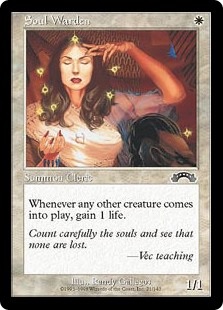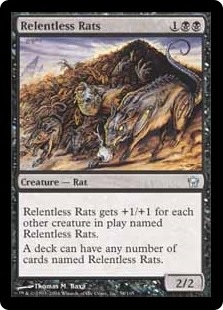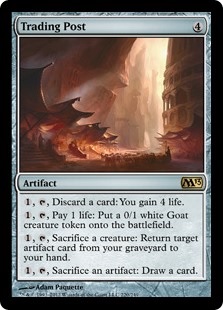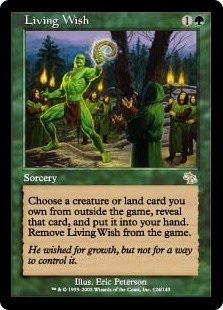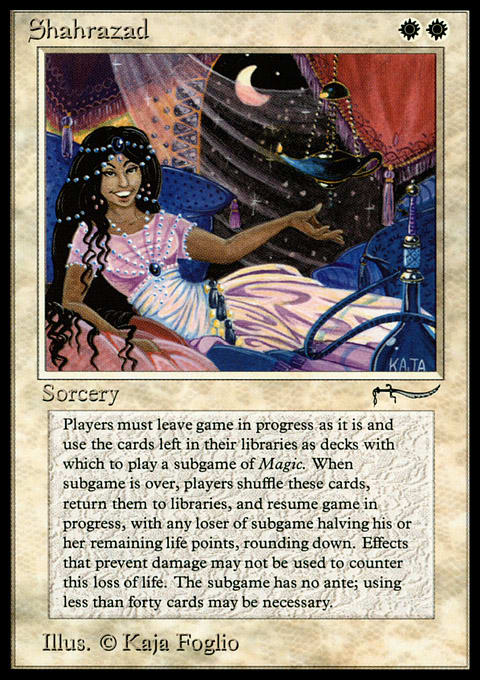Our previous part is here. From there you can hyperlink back to the beginning should you choose.
53. Infernal Contract
The crux of a bunch of different resources is always awesome, especially once you've understood a game be-yond its most basic level. There's not much complexity in this card on the surface, but on second thought, it both perfectly exemplifies Black's sell your soul identity, as well as creates a totally different "cost," depending on your life total at the time you cast it. A deceptive and fascinating card with a lot of Magic lessons for new players.
52. Soul Warden
Soul Warden is an excellent example of what I call "an ambassador card." Whether you haven't played in fifteen years or you only joined the fray for the first time more recently, almost every player can bond over a Birds of Paradise or a Serra Angel or...
A Soul Warden!
Cards that have the reach to be around in wildly different eras of Magic are intrinsically im-pressive. Soul Warden is as graceful now with a ton of tokens and life gain triggers as it was merely being the best 1-drop for the White aggressive decks that were around during its original printing. It exemplifies yet another strength of Magic: context flexibility without too much additional inelegance. This is an enduring winner.
51. Relentless Rats
Another recurring theme: The card that laughs at the rules without even trying. Like, seriously, what can't this game do? (Spoilers: This theme comes up again in today's episode.)
With the exception of the most crucial rules holding the fundamental game of Magic togeth-er, every rule will one day be made more of a guideline by some hilarious card text. The Relentless Rats design, itself a much improved and inventive way to evolve the poorly aging Plague Rats original, is the predecessor to the Shadowborn Apostles and Persistent Peti-tioners we appreciate to this day.
I continue to advocate for more legislation in how many different copies of cards can be used in non-Vintage formats. Though I'll never be sure, I wonder now if Relentless Rats' genius has had some causal responsibility in contemplating this idea. Good design inspires, and that is a powerful, powerful effect.
50. Day of Judgment
My peers from Magic's ancient years will bemoan my snubbing of the mythologized Wrath of God for this variation instead. I'll use this as a good case study in what the criterion for this list is really about:
Good design wants the least amount of frills, and in a complicated game, that's hard to keep going. Wrath of God suffers from some very ugly and inelegant text. While preserving the Alpha sentiment at all costs was definitely the right decision in reprinting it for years, the reality is that regeneration isn't relevant in an overwhelming amount of Magic games. In fact, the trend toward wanting your creatures to die, combined with the encouraged use of similar but cleaner abilities (think hexproof, if you simply have to), means that Wrath of God has more bad text than good. That's a lot of extra air. If Magic evolved in a way where regeneration was a big deal, who knows? Either way, that's not our reality.
Day of Judgment, on the other hand, is the final draft. Variations will continue forever, and planeswalkers certainly make things a little less straightforward, but this is the pinnacle of this iconic effect.
49. Trading Post
It's hard to have a bunch of words on a card and not have it be a mess, but sometimes, you really do want a card to be able to tell a story all on its own. Here are the ways Trading Post keeps things cohesive so it can do that without coming off like Ice Cauldron or Phantasmal Mount or Dance of the Dead or any card from Ice Age really:
- Despite all that text and a zero that shows up on the Goat (and potentially the expansion symbol; thank you, Pedant Corner), there are no numbers except for ones and fours. This includes the card's mana cost and the total number of abilities.
- Each of the abilities "feeds" into the next one as you read through the text. You may not be able to remem-ber the card verbatim, but you have a general idea of all the things the card can do.
The final result is a design that combos with itself, as well as who knows how many other game pieces. I have-n't been a floor trader in a decade, but if those still existed, there would be some icing on the thematic cake there, too.
48. Living Wish and Cunning Wish
Hey, speaking of nutso text that blows your brains out your ears when you first read it after pulling a card out of an innocuous Magic pack, get a load of these!
Fun fact: This effect was "previewed" in the ancient piece of cardboard called Ring of Ma'ruf, a Magic card with an ability so ludicrous it put emphasis italics on part of it. I'm not going to prompt the Cool Stuff Inc. coders to stick the image here because it'll cramp the flow, but you know, go look it up. It's crazy!
The color pie came along later, and combine that with a time when Magic's card pool wasn't so thin and wham! The concept of wishes and wishboards and all that are born. Spawnsire of Ula-mog, Fae of Wishes, and so on all owe to this design.
But wait! There's more!
Here's some Vice documentary level history on this:

This is a strange sort of progenitor from the long defunct InQuest Magazine. It's preserved over on Magic Librarities, which is an amazing deep dive down some strange early year rabbit holes. If you were there, reminisce. If you weren't, marvel at what mutated into the present. It's an excellent quarantine diversion for the invested and curious Magic player.
Thanks to them for preserving such things. My inner child appreciates it. (My outer child is also a fan.)
47. Lord of the Pit
This is essentially Magic's first big awesome creature. Everyone now knows Serra An-gel was the way to go, but that's all tournament ad hoc stuff. On sheer numbers and words that do cool stuff in your brain when you read them, this was the creature to pull out of a pack. Shivan Dragon doesn't even trample, noob!
It's a wonderful experience, especially when not every creature in the environment is gigantic. Tons of combos that feed into all the current "I want my creatures to die" play patterns and more spot on establishing of Black's evocative color pie. Serra Angel can't do all that, I'm afraid.
46. Shahrazad
For a set that was Magic's first non-core expansion, this is a really weird pile of cards. There really aren't any coherent themes for the most part, the set is small, the templating and balance are both god-awful...
but...
Arabian Nights also breathed fresh and surreal life into the game that its lungs are still using for oxygen. It wasn't a very good set at keeping the game sustainable from a rules perspective, but it did wonderful things at showing Magic's design wingspan. Arabian Nights cards gave you the impression that the cards you'd seen so far weren't everything; you could imagine infinite kinds of Magic cards. The limiting factor isn't the game's structure; it's us.
On the surface, you'd think Shahrazad would be a desperate attempt for a game late in life to jump the shark and be weird, but that's not how this game works, at least not so far. Magic cards can be weird as a celebration that it's possible that Magic can be so weird. That is reach a lot of games just can't dream of having. And here is Magic: the Gather-ing doing it basically from the beginning.
So make this a celebration of the first card that just celebrated Magic as a creative, ridicu-lous, and imaginative game. It's a top down idea beyond salvation, but that's okay sometimes! And more im-portantly, it's incredibly important that Magic can do it at all.
More to come next week.
(~_^)
The Rascal
The Indestructible Danny West

















